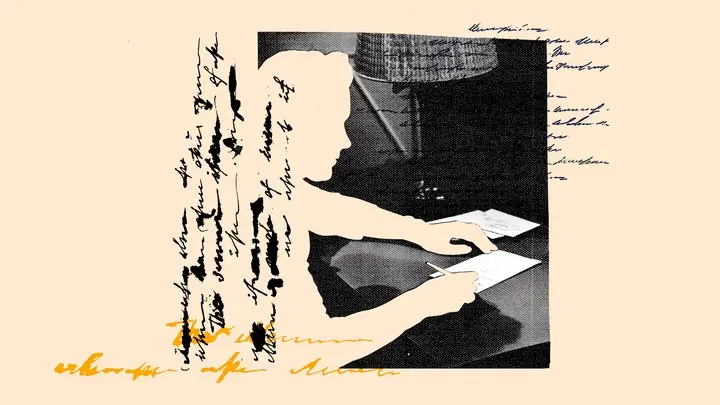Blog
Why Calligraphy Still Matters in the Digital Age

In our fast-paced, digital world where typing has replaced handwriting for most communication, calligraphy stands as a beautiful exception. This ancient art form continues to captivate people across generations, offering:
A meditative escape from screens
A way to add personal elegance to special occasions
A creative outlet that improves with practice
A connection to centuries of artistic tradition
Whether you're looking to create stunning wedding invitations, design unique home decor, or simply enjoy a relaxing new hobby, calligraphy offers endless possibilities. This comprehensive guide will take you from complete beginner to confident calligrapher.
The Fascinating History of Calligraphy
Ancient Beginnings
Calligraphy's roots stretch back thousands of years:
Chinese calligraphy (200 BCE): Considered one of the highest art forms
Islamic calligraphy (7th century): Sacred text decoration
European calligraphy (Middle Ages): Monastic manuscript illumination
The Golden Age of Penmanship
The 19th century saw calligraphy flourish:
Spencerian Script (America)
Copperplate (England)
Ornamental Penmanship
Calligraphy Today
Modern applications include:
Wedding stationery
Branding and logos
Tattoo designs
Social media content
Choosing Your Calligraphy Style
1. Traditional Styles
Copperplate: Elegant, slanted script with hairline upstrokes
Spencerian: Flowing American business hand
Gothic/Blackletter: Dramatic medieval style
2. Modern Variations
Brush Calligraphy: Casual, expressive style
Faux Calligraphy: Easy starter technique
Bounce Lettering: Playful, uneven baseline
3. World Calligraphy Traditions
Arabic: Fluid, interconnected letters
Chinese: Brushstroke artistry
Japanese: Balanced, minimalist forms
Essential Calligraphy Tools & Materials
Writing Instruments
Dip Pens: Classic choice with interchangeable nibs
Fountain Pens: Convenient for beginners
Brush Pens: Versatile for modern styles
Markers: Great for practice
Inks & Paints
India Ink: Classic black, waterproof
Colored Inks: For creative projects
Gouache: Mixable opaque paint
Watercolors: Soft, blended effects
Papers & Surfaces
Practice Paper: Smooth, bleed-resistant
Final Project Paper: High-quality cotton
Alternative Surfaces: Wood, glass, fabric
Helpful Accessories
Lightbox for tracing
Angle guide for consistency
Pen cleaner for maintenance
Bring out your natural glow with Curology
At solmen va esser necessi far uniform grammatica, pronunciation e plu sommun paroles. Ma quande lingues coalesce, li grammatica del resultant lingue es plu simplic e regulari quam ti del coalescent lingues. Li nov lingua franca va esser plu simplic e regulari quam li existent Europan lingues pronunciation e li plu commun vocabules solmen va esser.
Abu Dhabi Royal Family Metal Wall Art – Luxury Emirati Tribute Decor
AED 120.00 – AED 449.00Price range: AED 120.00 through AED 449.00Allahu Akbar Minaret Style Metal Islamic Wall Art
AED 149.00 – AED 199.00Price range: AED 149.00 through AED 199.00As-Salamu Alaykum Islamic Greeting Metal Wall Art – Modern Muslim Home Decor
AED 199.00 – AED 299.00Price range: AED 199.00 through AED 299.00Fundamental Techniques Every Beginner Should Master
Proper Posture & Grip
Sit upright with feet flat
Hold pen at 45-degree angle
Relax your grip to avoid fatigue
Basic Strokes (The Building Blocks)
Upstrokes (thin)
Downstrokes (thick)
Ovals
Compound curves
Ascenders and descenders
Letter Formation Principles
Consistent slant (usually 55 degrees)
Even spacing between letters
Balanced proportions
Connecting Letters Beautifully
Study letter exit and entry strokes
Practice common letter combinations
Maintain rhythm and flow
Step-by-Step Practice Routine
Daily Warm-Up (15 minutes)
Basic strokes (5 min)
Alphabet drills (5 min)
Word practice (5 min)
Weekly Projects
Monday: Lowercase letters
Wednesday: Uppercase letters
Friday: Short quotes
Sunday: Complete piece
Monthly Challenges
Different style exploration
Ink color experiments
Surface variations
Common Mistakes & How to Fix Them
Technical Issues
Ink bleeding: Use better paper
Skipping nibs: Clean properly
Shaky lines: Slow down
Aesthetic Problems
Inconsistent slant: Use guide sheets
Uneven spacing: Practice "eye measurement"
Stiff lettering: Loosen wrist
Mental Blocks
Perfectionism: Embrace imperfections
Frustration: Celebrate small wins
Comparison: Focus on personal progress
Creative Applications for Your New Skill
Personal Use
Handwritten letters and cards
Journal embellishment
Gift tags and wrapping
Special Occasions
Wedding invitations
Place cards and menus
Anniversary gifts
Home & Office
Framed quotes
Custom calendars
Chalkboard art
Business Opportunities
Logo design
Event signage
Commissioned work
Taking Your Calligraphy Further
Advanced Techniques
Flourishing and ornamentation
Layered ink effects
Gold leaf application
Digital Calligraphy
Scanning and editing
Creating digital fonts
Selling digital files
Teaching & Sharing
Local workshops
Online tutorials
Social media challenges
Inspiration From Master Calligraphers
Historical Masters
Edward Johnston (Foundational Hand)
Rudolf Koch (German lettering artist)
Wang Xizhi (Chinese calligrapher)
Contemporary Artists
Seb Lester (modern interpretations)
Laura Hooper (wedding calligraphy)
Jake Weidmann (young master penman)
Conclusion: Your Calligraphy Journey Begins Today
Calligraphy is more than beautiful writing—it's a meditative practice, a creative outlet, and a connection to centuries of artistic tradition. Remember:
Progress takes consistent practice
Every master was once a beginner
Your unique style will emerge with time






